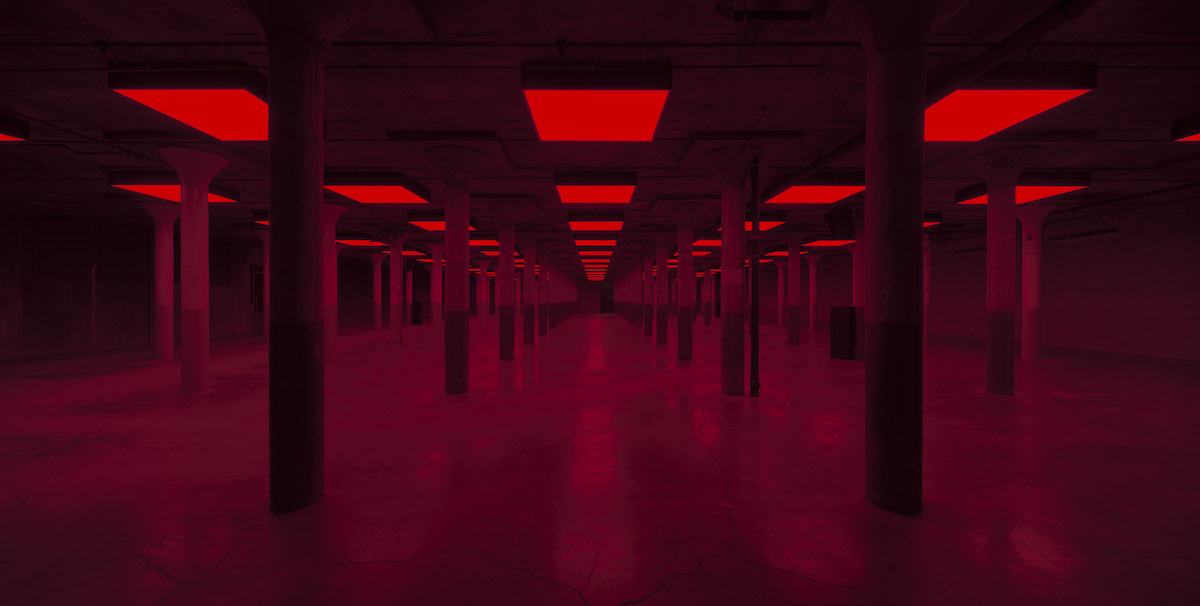

Artist and filmmaker Steve McQueen specializes in the kinds of lengthy shots that brand themselves upon your brain: a house that nearly falls onto a person, the Statue of Liberty filmed from a whirring helicopter, the attempted lynching of a Black man shot via long take. But no longer does McQueen seem so interested in creating images like those.
Occupied City (2023), his four-and-a-half-hour documentary about Amsterdam during the Holocaust, seems most telling about his priorities right now. In this film, a narrator outlines the disenfranchisement of Jews across the city, but McQueen’s footage of the present-day Dutch capital never testifies to what is described. His camera drifts through apartments, down museum corridors, and across canals. More often than not, he doesn’t show us anything of much interest. At a time when images of police brutality and suffering have become pervasive, McQueen has moved away from representing violence altogether.
With his latest work, he shows us nothing at all. McQueen has parted ways with moving images entirely for Bass (2024), a new installation that fills the 30,000-square-foot basement of Dia:Beacon in the Hudson Valley with sound and light. The only objects on view are 60 boxes hung on the ceiling that slowly change their hue, turning the space a succession of vibrant colors, from the retina-burning red of a horror movie to the orange glow of a sunset.
The title of Bass is the giveaway: the focus is sound, not sight. The sounds were produced by five musicians, all belonging to the African diaspora, who performed together in Dia’s columned basement this past January. McQueen was there to act as conductor, not that these musicians really needed it—mainly, they just improvised. He has presented all 189 minutes of their music largely unedited.
This quintet—Marcus Miller, Aston Barrett Jr., Mamadou Kouyaté, Laura-Simone Martin, and Meshell Ndegeocello—appears to have played as a unified whole, not as five soloists. It is difficult, for example, to discern which sounds were produced by Kouyaté, playing a West African instrument called a ngoni, and which were produced by Miller, a bassist who’s worked with many jazz greats. Together, the musicians have created a symphony of rumbles, bowed strings, and plaintive hums, some of which McQueen has arrayed across space so that they appear to echo across this vast gallery.

The relationship between the music and the lightboxes is oblique. Sometimes, coloristic shifts and sonic digressions sync to form associations. To my mind, a transition from deep blue to that burning red seemed to induce a horror-like state. Harsh knocking noises and aggressive pizzicato started to pour out of speakers overhead. The sounds continued until red faded to orange.
That, however, is an exceptional instance in this elegant installation. Most of the time, the music is set to a low simmer, with the sounds of fingers running across frets and the roll of bass playing whether the space is lit neon green, lush fuchsia, or haunting azure.
These hues recall the ones emitted by the Dan Flavin sculptures upstairs; the squarish, factory-made look of the lightboxes owes something to pieces by Donald Judd and his ilk. There can be no doubt that McQueen is situating Bass within the history of Minimalism, the movement that has provided the backbone of Dia’s collection. Yet whereas the Minimalists of the 1960s and ’70s prized austerity and order, McQueen’s latest contains an inner warmth. In that way, it’s closer to another recent installation that showed in this basement, Carl Craig’s more maximal Party/After-Party (2020), a light-and-sound spectacle that had the feeling of a wild night’s final hours.
The randomness of the sounds runs counter to the rigorous, strict arrangement of his lightboxes and the basement’s columns. And there is no designated way to experience Bass, either, since there are just a few benches set against the darkened walls. You can methodically weave your way through the columns, as I did, or you can plop down in the center and take it all in, as I observed others doing. McQueen seems to delight in all these possibilities.

What is Bass about? The work is abstract, but McQueen seems to have had concrete ideas on his mind. He told the New York Times that he’d been thinking of the Middle Passage as a state of “limbo,” and that he views Black people as being “post-apocalyptic.” Maybe that second remark explains the vacant, semi-abandoned look of the Dia basement in this artist’s hands.
But there is no one-to-one relationship: Bass does not simulate the hull of a ship ferrying enslaved people across the Atlantic, nor does it even feature representations of anything or anyone at all. If Bass is in some way connected to the Middle Passage, McQueen has approached the carnage that happened along the way using the same method he applied to the atrocities of the Holocaust in Occupied City: by not depicting it at all.
His reasons for doing so may be similar to those of many artists in the current Whitney Biennial, a show of art that deals with racism and other forms of prejudice without representing them. Perhaps McQueen, like those artists, rightfully assumes that we know enough about the barbarities of slavery and sees no reason to re-inflict trauma by depicting them once more. (He already did that anyway in 12 Years a Slave, his 2013 Oscar-winning film adapted, with a questionable degree of historical accuracy, from Solomon Northup’s memoir.) Perhaps, too, McQueen is suggesting that painful histories live on in ways that cannot be visualized, especially when those in power have been successful in expunging them from public memory.
And when that happens, invisible histories are spun into sound—stories get told and retold, songs record events that books do not, abstract musical tones recall clear memories. Bass is a sonic work about that which cannot be seen. Hear its hushed cacophony, feel its sounds vibrate in your chest, and find what exists out of sight.